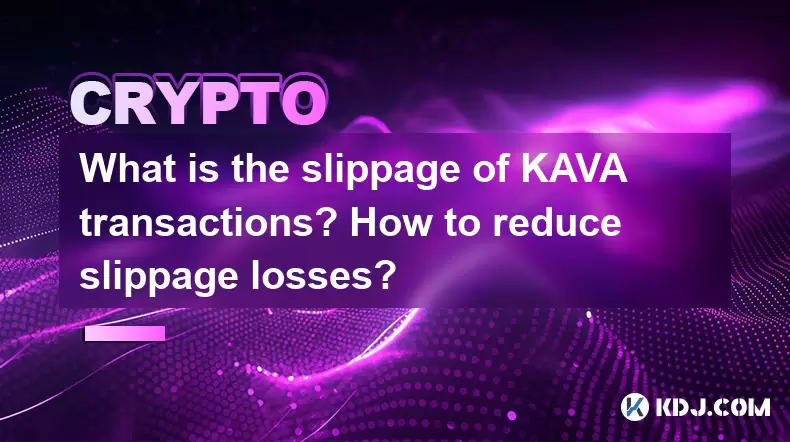-
 Bitcoin
Bitcoin $118700
1.60% -
 Ethereum
Ethereum $4230
-1.16% -
 XRP
XRP $3.197
-2.08% -
 Tether USDt
Tether USDt $1.000
-0.01% -
 BNB
BNB $803.3
-0.46% -
 Solana
Solana $183.2
0.06% -
 USDC
USDC $0.9999
0.00% -
 Dogecoin
Dogecoin $0.2343
-3.95% -
 TRON
TRON $0.3390
1.00% -
 Cardano
Cardano $0.8020
-1.93% -
 Hyperliquid
Hyperliquid $45.18
2.39% -
 Chainlink
Chainlink $22.04
3.02% -
 Stellar
Stellar $0.4449
-1.66% -
 Sui
Sui $3.872
-2.14% -
 Bitcoin Cash
Bitcoin Cash $570.6
-0.37% -
 Hedera
Hedera $0.2593
-2.92% -
 Ethena USDe
Ethena USDe $1.001
-0.01% -
 Avalanche
Avalanche $23.83
-3.79% -
 Litecoin
Litecoin $124.5
1.83% -
 Toncoin
Toncoin $3.335
-2.74% -
 UNUS SED LEO
UNUS SED LEO $9.029
0.26% -
 Shiba Inu
Shiba Inu $0.00001363
-2.31% -
 Uniswap
Uniswap $10.93
-1.42% -
 Polkadot
Polkadot $4.060
-2.29% -
 Dai
Dai $1.000
-0.01% -
 Cronos
Cronos $0.1631
2.71% -
 Ethena
Ethena $0.7746
3.06% -
 Pepe
Pepe $0.00001208
-3.73% -
 Bitget Token
Bitget Token $4.445
-1.47% -
 Monero
Monero $268.7
-2.30%
What is the slippage of KAVA transactions? How to reduce slippage losses?
Slippage in KAVA transactions can be reduced by using limit orders, trading during high liquidity periods, and breaking large orders into smaller ones.
May 07, 2025 at 07:00 pm

What is the slippage of KAVA transactions? How to reduce slippage losses?
When trading cryptocurrencies, one of the key factors that traders need to consider is slippage. Slippage refers to the difference between the expected price of a trade and the price at which the trade is actually executed. In the context of KAVA transactions, slippage can significantly impact the profitability of trades. This article will delve into what slippage means for KAVA transactions and provide detailed strategies on how to reduce slippage losses.
Understanding Slippage in KAVA Transactions
Slippage occurs when there is a change in the market price between the time a trade order is placed and the time it is executed. This can happen due to various reasons such as high volatility, low liquidity, or the size of the trade relative to the market. For KAVA transactions, slippage can be particularly impactful due to the cryptocurrency's specific market conditions.
In the KAVA market, slippage can be influenced by the following factors:
- Market Volatility: KAVA, like many cryptocurrencies, can experience rapid price movements. High volatility increases the likelihood of slippage.
- Liquidity: If there is low liquidity in the KAVA market, larger orders can move the market price more significantly, resulting in higher slippage.
- Order Size: Larger orders are more likely to experience slippage because they can exhaust the available liquidity at the desired price level.
Measuring Slippage in KAVA Transactions
To measure slippage in KAVA transactions, traders need to compare the expected price of the trade with the actual execution price. The difference between these two prices is the slippage. For example, if a trader places an order to buy KAVA at $5.00 per token, but the order is filled at $5.10, the slippage is $0.10 per token.
Traders can use trading platforms that provide detailed order execution reports to track slippage. These reports will show the expected price, the actual execution price, and the resulting slippage for each trade.
Strategies to Reduce Slippage in KAVA Transactions
Reducing slippage in KAVA transactions requires a combination of careful planning and the use of specific trading strategies. Here are some effective methods to minimize slippage losses:
Use Limit Orders
Limit orders allow traders to specify the maximum price they are willing to pay for a buy order or the minimum price they are willing to accept for a sell order. By using limit orders, traders can avoid the risk of slippage that comes with market orders, which are executed at the best available price at the time of order placement.
To place a limit order for KAVA transactions:
- Open your trading platform and navigate to the KAVA trading pair.
- Select the "Limit Order" option.
- Enter the desired price at which you want to buy or sell KAVA.
- Specify the amount of KAVA you want to trade.
- Review the order details and submit the order.
Trade During High Liquidity Periods
Trading during periods of high liquidity can help reduce slippage. High liquidity means there are more buyers and sellers in the market, which can lead to tighter bid-ask spreads and less price movement when executing large orders.
To identify high liquidity periods for KAVA:
- Monitor trading volumes on KAVA trading pairs across different exchanges.
- Use trading platforms that provide real-time liquidity data.
- Consider trading during peak market hours when more traders are active.
Break Large Orders into Smaller Ones
Breaking large orders into smaller ones can help minimize the impact on the market price and reduce slippage. By executing smaller orders, traders can avoid exhausting the available liquidity at a single price level.
To break a large KAVA order into smaller ones:
- Determine the total amount of KAVA you want to trade.
- Divide the total amount into smaller, manageable chunks.
- Place multiple limit orders at different price levels to spread out the impact on the market.
Use Slippage Tolerance Settings
Some trading platforms offer slippage tolerance settings that allow traders to specify the maximum amount of slippage they are willing to accept. By setting a slippage tolerance, traders can ensure that their orders are only executed if the slippage is within their acceptable range.
To use slippage tolerance settings for KAVA transactions:
- Open your trading platform and navigate to the KAVA trading pair.
- Look for the slippage tolerance setting in the order placement interface.
- Enter the maximum slippage percentage you are willing to accept.
- Place your order with the slippage tolerance setting enabled.
Monitoring and Adjusting Strategies
Monitoring and adjusting trading strategies is crucial for effectively managing slippage in KAVA transactions. Traders should regularly review their trading performance and adjust their strategies based on market conditions and the effectiveness of their current approach.
To monitor and adjust strategies for KAVA transactions:
- Keep a trading journal to record all trades, including the expected and actual execution prices.
- Analyze the slippage experienced in each trade and identify patterns or common factors contributing to slippage.
- Adjust trading strategies based on the analysis, such as changing the timing of trades, adjusting order sizes, or modifying slippage tolerance settings.
Frequently Asked Questions
Q: Can slippage be completely eliminated in KAVA transactions?
A: No, slippage cannot be completely eliminated due to the inherent nature of cryptocurrency markets. However, by using the strategies outlined in this article, traders can significantly reduce the impact of slippage on their trades.
Q: How does the size of a KAVA transaction affect slippage?
A: The size of a KAVA transaction can significantly affect slippage. Larger orders are more likely to experience higher slippage because they can exhaust the available liquidity at the desired price level, causing the market price to move more significantly.
Q: Are there any tools or platforms that can help predict slippage in KAVA transactions?
A: While there are no tools that can predict slippage with absolute certainty, some trading platforms offer features such as real-time liquidity data and order book analysis that can help traders make more informed decisions and potentially reduce slippage.
Q: How does the choice of trading platform impact slippage in KAVA transactions?
A: The choice of trading platform can impact slippage in KAVA transactions due to differences in liquidity, order execution speed, and available trading features. Platforms with higher liquidity and advanced order types, such as limit orders and slippage tolerance settings, can help traders manage slippage more effectively.
Disclaimer:info@kdj.com
The information provided is not trading advice. kdj.com does not assume any responsibility for any investments made based on the information provided in this article. Cryptocurrencies are highly volatile and it is highly recommended that you invest with caution after thorough research!
If you believe that the content used on this website infringes your copyright, please contact us immediately (info@kdj.com) and we will delete it promptly.
- LYNO AI & XRP: Decoding the ROI Potential in a Shifting Crypto Landscape
- 2025-08-11 04:30:11
- Cryptos on the Cusp: Cold Wallet, Price Breakouts, and What's Hot Now
- 2025-08-11 04:50:11
- Dogecoin, Meme Coins, and Remittix Utility: What's the Hype?
- 2025-08-11 04:50:11
- Sky Bet, ESPN, and the Spartans Bonus: A Betting Landscape Overview
- 2025-08-11 05:11:16
- Altcoin Buyouts & Market Removals: Crypto Development's Wild Ride
- 2025-08-11 04:30:11
- Bitcoin Banks Arrive: El Salvador's Bold Play with Investment Banks and Crypto
- 2025-08-11 04:55:12
Related knowledge

How to purchase Aragon (ANT)?
Aug 09,2025 at 11:56pm
Understanding Aragon (ANT) and Its PurposeAragon (ANT) is a decentralized governance token that powers the Aragon Network, a platform built on the Eth...

Where to trade Band Protocol (BAND)?
Aug 10,2025 at 11:36pm
Understanding the Role of Private Keys in Cryptocurrency WalletsIn the world of cryptocurrency, a private key is one of the most critical components o...

What is the most secure way to buy Ocean Protocol (OCEAN)?
Aug 10,2025 at 01:01pm
Understanding Ocean Protocol (OCEAN) and Its EcosystemOcean Protocol (OCEAN) is a decentralized data exchange platform built on blockchain technology,...

Where can I buy UMA (UMA)?
Aug 07,2025 at 06:42pm
Understanding UMA and Its Role in Decentralized FinanceUMA (Universal Market Access) is an Ethereum-based decentralized finance (DeFi) protocol design...

How to buy Storj (STORJ) tokens?
Aug 09,2025 at 07:28am
Understanding Storj (STORJ) and Its Role in Decentralized StorageStorj is a decentralized cloud storage platform that leverages blockchain technology ...

What is the best app to buy Nano (NANO)?
Aug 09,2025 at 03:35am
Understanding Nano (NANO) and Its Unique FeaturesNano is a feeless, instant cryptocurrency designed for fast peer-to-peer transactions. Unlike many ot...

How to purchase Aragon (ANT)?
Aug 09,2025 at 11:56pm
Understanding Aragon (ANT) and Its PurposeAragon (ANT) is a decentralized governance token that powers the Aragon Network, a platform built on the Eth...

Where to trade Band Protocol (BAND)?
Aug 10,2025 at 11:36pm
Understanding the Role of Private Keys in Cryptocurrency WalletsIn the world of cryptocurrency, a private key is one of the most critical components o...

What is the most secure way to buy Ocean Protocol (OCEAN)?
Aug 10,2025 at 01:01pm
Understanding Ocean Protocol (OCEAN) and Its EcosystemOcean Protocol (OCEAN) is a decentralized data exchange platform built on blockchain technology,...

Where can I buy UMA (UMA)?
Aug 07,2025 at 06:42pm
Understanding UMA and Its Role in Decentralized FinanceUMA (Universal Market Access) is an Ethereum-based decentralized finance (DeFi) protocol design...

How to buy Storj (STORJ) tokens?
Aug 09,2025 at 07:28am
Understanding Storj (STORJ) and Its Role in Decentralized StorageStorj is a decentralized cloud storage platform that leverages blockchain technology ...

What is the best app to buy Nano (NANO)?
Aug 09,2025 at 03:35am
Understanding Nano (NANO) and Its Unique FeaturesNano is a feeless, instant cryptocurrency designed for fast peer-to-peer transactions. Unlike many ot...
See all articles

























































































